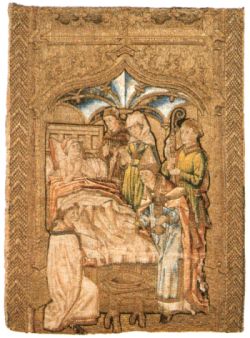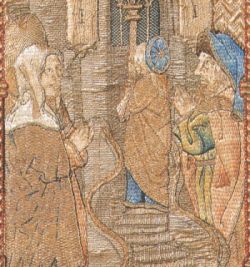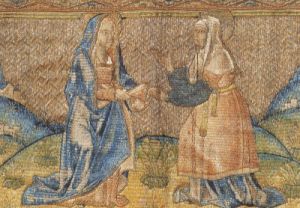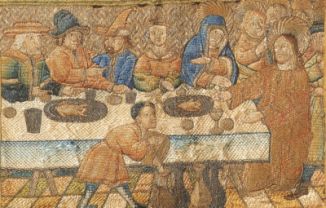As bishop of Lausanne he established the chapel of St. Mauritius and here he was buried in 1517. The figurative program of this chapel shows close coherence with the program of the golden vestment. The virigin Mary has a central position and this is connected with Mary's patronage over the cathedral of Lausanne. The cathedral was a place of pilgrimage for parents of children who died without being baptised.

embroidery around 1470
representation of the sacrifice of death
see
also: iconoclasm



